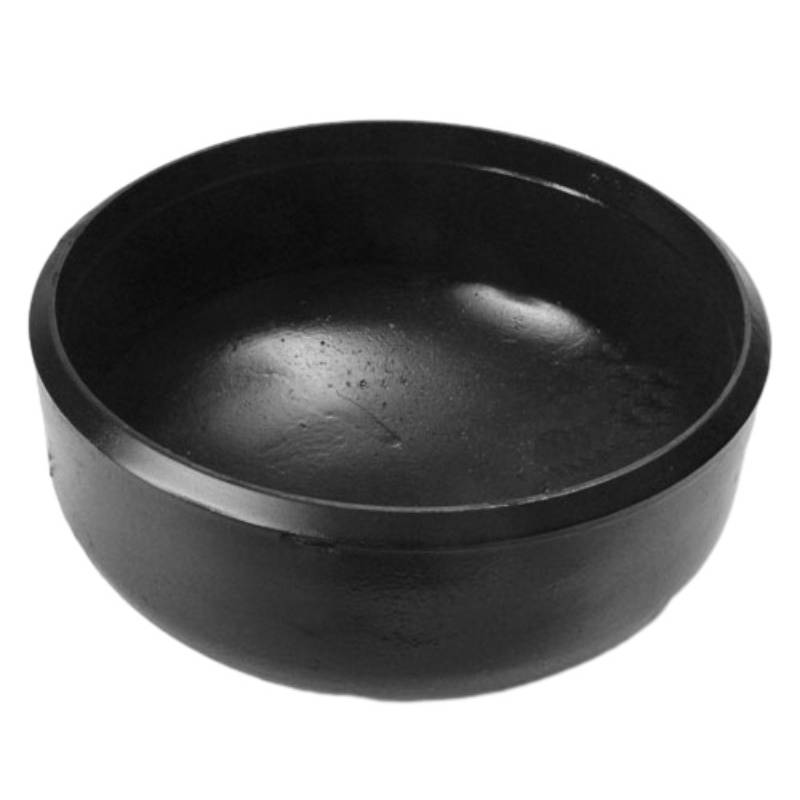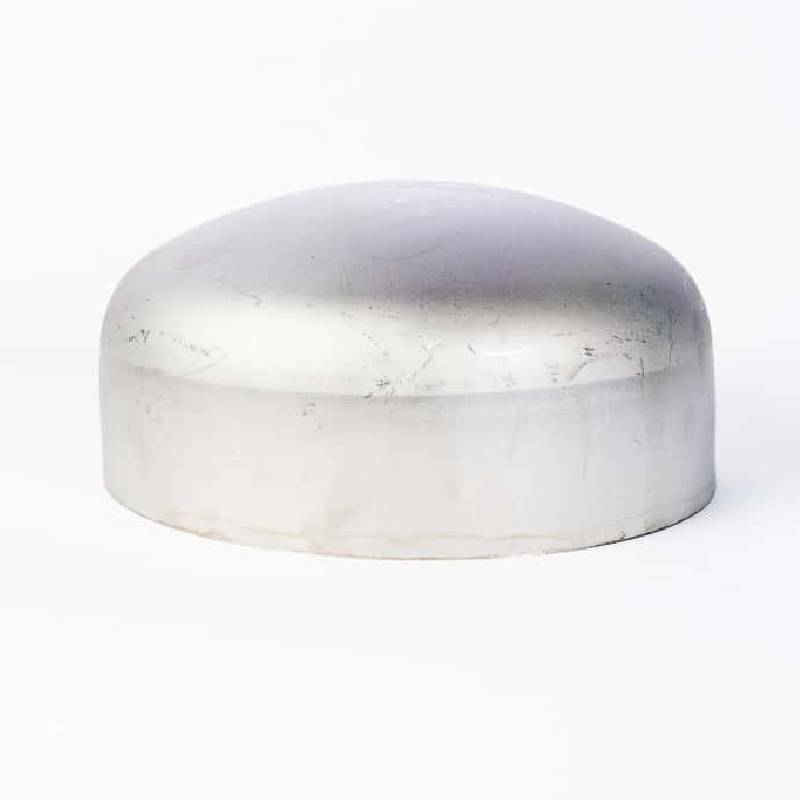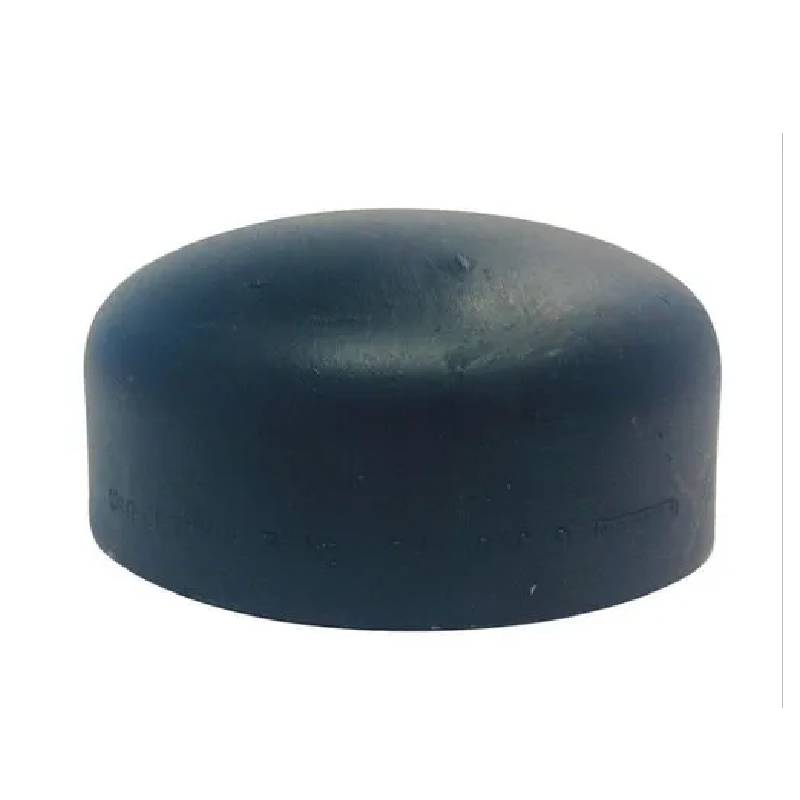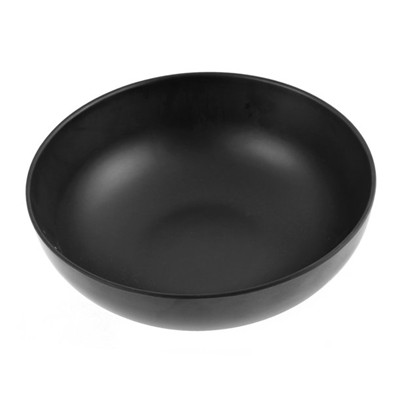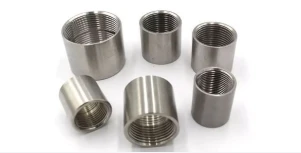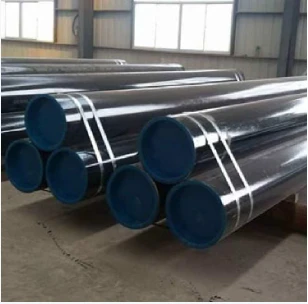-
Standarta atbilstība:
ANSI/ASME B16.9 sadurmetināšanas vāciņi atbilst Amerikas Nacionālā standartu institūta (ANSI) un Amerikas Mašīnbūves inženieru biedrības (ASME) specifikācijām. Šī standartizācija nodrošina dizaina un veiktspējas vienveidību, savietojamību un uzticamību, veicinot netraucētu integrāciju cauruļvadu sistēmās.
-
Sadurmetināšanas savienojums:
Sadurmetināšanas vāciņi tiek uzstādīti, piemetinot tos tieši uz caurules gala, izveidojot pastāvīgu un izturīgu savienojumu. Sadurmetināšanas tehnika ietver caurules galu un vāciņa karsēšanu līdz kušanas temperatūrai, pēc tam tos saspiežot kopā, lai izveidotu metalurģisku saiti. Šī metināšanas metode nodrošina stipru un necaurlaidīgu savienojumu, novēršot nepieciešamību pēc papildu blīvējuma materiāliem.
-
Aizzīmogota aizvēršana:
Sadurmetināšanas vāciņu galvenā funkcija ir nodrošināt cauruļvadu sistēmas cauruļu galiem noslēgtu aizdari. Šiem vāciņiem ir kupolveida vai plakana virsma, kas nosedz caurules atveri, novēršot šķidrumu vai gāzu iekļūšanu vai izplūdi. Metinātais savienojums nodrošina ciešu blīvējumu, samazinot noplūdes risku un saglabājot sistēmas integritāti.
-
Materiāla izvēle:
Sadurmetināšanas vāciņi ir pieejami no dažādiem materiāliem, lai tie atbilstu dažādiem darbības apstākļiem un dažādiem materiāliem. Parastie materiāli ir oglekļa tērauds, nerūsējošais tērauds, leģētais tērauds un krāsaino metālu sakausējumi, piemēram, misiņš vai varš. Materiāla izvēle ir atkarīga no tādiem faktoriem kā temperatūra, spiediens, izturība pret koroziju un saderība ar transportējamo šķidrumu.
-
Daudzpusīgas lietojumprogrammas:
ANSI/ASME B16.9 sadurmetināšanas vāciņi ir pielietojami dažādās nozarēs, tostarp naftas un gāzes, naftas ķīmijas, ķīmiskās apstrādes, ūdens attīrīšanas un elektroenerģijas ražošanā. Tos izmanto cauruļvadu, tvertņu, tvertņu un iekārtu galu blīvēšanai, nodrošinot aizsardzību pret piesārņojumu, koroziju un vides apdraudējumiem.
-
Pielāgošanas opcijas:
Lai gan sadurmetināšanas vāciņi atbilst standarta izmēriem un specifikācijām, ir pieejamas pielāgošanas iespējas, lai atbilstu konkrētām projekta prasībām. Tas var ietvert dažādas vāciņa izmēra, biezuma, materiāla kvalitātes un virsmas apdares atšķirības. Pielāgotus vāciņus var pielāgot, lai tie atbilstu unikālām cauruļvadu konfigurācijām un pielāgotos īpašiem apstākļiem vai darbības videi.
Buttweld Fittings Manufacturing Process
The manufacturing of buttweld fittings primarily involves two methods: cold drawing and hot forming.
The general steps in the process are as follows:
1. Material Preparation
The initial stage involves sourcing and preparing the raw materials needed for production.
2. Cutting
Pipes or plates are cut into specified shapes or lengths as per requirements.
3. Forming
The materials are shaped into various configurations, such as buttweld pipe caps, 90-degree elbows, and reducing tees. Cold drawn products are formed directly into their designated shapes using hammers, mechanical presses, or upsetters. In contrast, the hot forming process begins with heating the material, followed by shaping it.
4. Heat Treatment
This process entails heating and cooling the metals to alter their microstructure, enhancing both physical and mechanical properties to achieve the desired characteristics.
5. Machining
Sharp cutting tools are employed in this stage to refine shapes and prepare the ends of the fittings.
6. Inspection and Testing
The products undergo a thorough inspection in accordance with relevant standards, checking dimensions, material quality, and appearance.
7. Coating (if required)
Finally, a coating may be applied as necessary to meet specific requirements.
Butt Weld Pipe Cap FAQs
-
What materials are the butt weld pipe caps made from?
- Our butt weld pipe caps are crafted from high-quality materials including carbon steel, stainless steel, and alloy steel. This selection ensures durability and resistance to corrosion, making them suitable for a wide range of applications in various industries such as oil and gas, water supply, and construction.
-
What sizes are available for the butt weld pipe caps?
- We offer a comprehensive range of sizes for our butt weld pipe caps, from small diameters to large fittings, accommodating various pipe sizes. Please refer to the product listing for specific dimensions or contact our customer support for assistance in selecting the appropriate size for your project needs.
-
Are these butt-weld pipe caps suitable for high-pressure applications?
- Yes, our butt weld pipe caps are designed to support high-pressure applications. They meet industry standards and specifications, providing a secure and leak-proof seal that can withstand significant pressure levels. Be sure to check the specifications to ensure compatibility with your particular system requirements.
-
How do I install the butt weld pipe caps?
- Installing butt weld pipe caps requires welding them directly to the pipe for a strong, permanent connection. We recommend using qualified welders and following proper welding procedures to ensure a secure fit and maintain the integrity of the piping system. For detailed installation guidelines, please consult the accompanying technical documentation.
-
Can these butt-weld pipe caps be used in outdoor applications?
Absolutely! Our butt weld pipe caps are suitable for both indoor and outdoor applications. They are built to withstand environmental factors, making them ideal for exterior installations. For prolonged exposure to harsh conditions, we recommend our stainless steel options for enhanced resistance to corrosion.
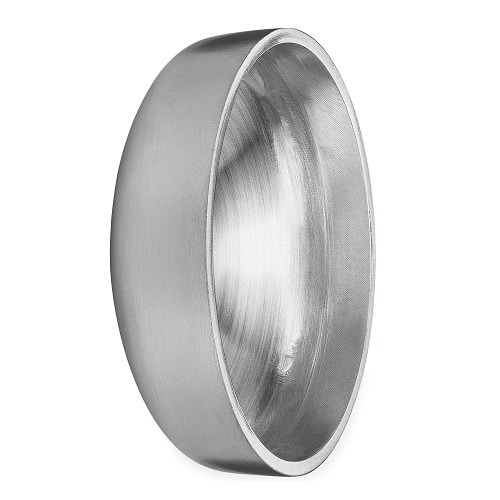
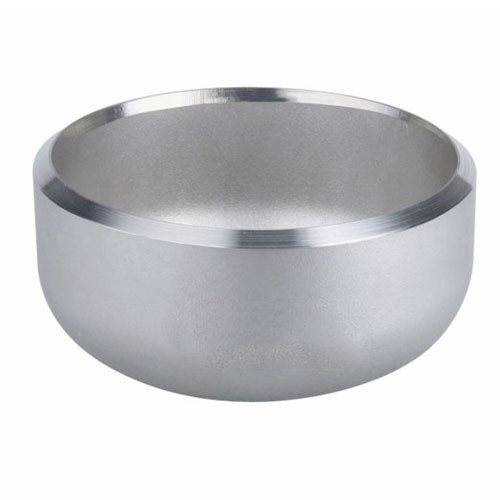
ANSI/ASME B16.9 sadurmetināšanas vāciņi ir svarīgas sastāvdaļas rūpnieciskajās cauruļvadu sistēmās, nodrošinot drošu un necaurlaidīgu cauruļu galu aizdari. To atbilstība ANSI un ASME standartiem, sadurmetināšanas savienojums, blīvēšanas iespējas un daudzpusība padara tos neaizstājamus dažādos lietojumos dažādās nozarēs. Izmantojot sadurmetināšanas vāciņus, inženieri un operatori var nodrošināt savu cauruļvadu sistēmu integritāti, drošību un efektivitāti, veicinot vienmērīgu un bezproblēmu darbību.







